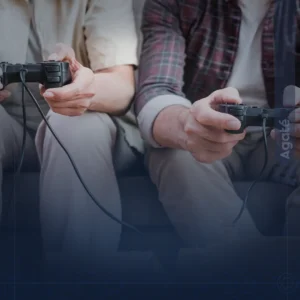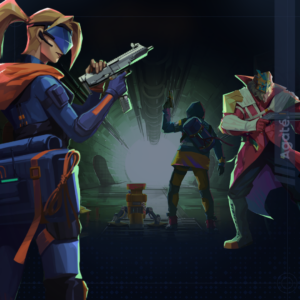Thanks to technological advancements and the ever-growing demand for interactive entertainment, the gaming industry has evolved significantly over the past few decades. Game development services have become essential in delivering high-quality games that captivate players worldwide. Let’s take a closer look at the various offerings of today’s game development services and the value they bring to the table.
Custom Game Development
One of the primary services offered by game development companies is custom game development. This involves creating games tailored to client’s unique requirements, whether they are indie developers, established studios, or businesses looking to use games for marketing or training purposes. Custom game development allows for creating games across multiple platforms, including PC, consoles, and mobile devices, ensuring a broad reach for the final product.
Custom game development can range from small indie titles to large-scale AAA games and can be created for a variety of platforms, including PC, consoles, and mobile devices. The process of custom game development involves working closely with clients to understand their vision and goals for the game and then creating a unique design and development plan to bring that vision to life.
It‘s also beneficial for businesses looking to use games for marketing or training purposes. Games can be designed to promote a product or service, educate employees, or train customers on how to use a particular product. By creating custom games, businesses can engage their target audience in a more interactive and meaningful way, ultimately leading to increased brand recognition and customer loyalty. Overall, custom game development is an important service that allows clients to create unique and engaging games tailored to their specific needs and goals.
Game Design and Concept Development
A crucial aspect of game development is designing the game’s concept, mechanics, and overall gameplay experience. Game development services collaborate with clients to create unique and engaging game concepts, ensuring that the final product stands out in the competitive gaming market. This process involves brainstorming ideas, developing a storyline, creating characters, and designing the game world, among other tasks.
Art and Animation Services
Visual appeal is a significant factor in a game’s success, and game development services offer art and animation services to create stunning visuals that enhance the gaming experience. This includes 2D and 3D art, character design, environment design, and animation. These services ensure that the game’s graphics are both aesthetically pleasing and optimized for performance on various platforms. Game development service companies offer many services, but three critical aspects of game art fall within the scope of their art and animation offerings: technical art, 3D game art, and concept art.
Technical Art
Technical art involves creating and optimizing game assets to ensure that they work seamlessly with the game engine. Technical artists are responsible for developing tools and pipelines that streamline the game development process, making it more efficient and cost-effective. In layman’s terms, technical artists facilitate how art is made. Hence, they work closely with programmers to ensure that the game’s technical aspects are functioning correctly and that the art assets integrate seamlessly with the game engine. Technical art plays a role in creating visually appealing and technically sound games that offer a smooth gaming experience.
3D Game Art
The creation of 3D models and environments is an essential aspect of 3D game art. At its core, game art encompasses all visual elements that make up a computer game, such as characters, menus, and user interfaces. It‘s the game artist’s responsibility to produce these artistic components, including characters, objects, environments, animations, effects, lighting, and other visual details.
To create high-quality 3D models optimized for use in games, 3D artists utilize specialized software. Their primary objective is to create visually stunning characters, objects, and environments that enhance the gaming experience. Crafting 3D game art requires extensive skill and experience to create realistic and immersive environments that players can interact with.
Concept Art
Concept art is another essential aspect of game art that plays a crucial role in the video game development process, particularly in the early stages. Concept artists are responsible for helping to determine the overall look and feel of the game by creating visual concepts and designs that involve creating visual representations of the game’s characters, environments, and objects. They work closely with game designers to develop a visual style and aesthetic that sets the tone for the game.
Concept artists use various tools and techniques to create sketches, drawings, and paintings that convey the game’s look and feel. They help the team to visualize how the game will look and play and play a critical role in the game development process. Concept art sets the tone for the entire project and helps to guide the game’s design. A concept artist’s work continues beyond designing game elements, as they also help to establish the game’s overall artistic direction. They work with art directors to develop the game’s visual style, color palette, and other elements that will make it stand out.
Game Programming and Engineering
Game programming and engineering have evolved with technology. In the early days of video game history, programmers were accountable for most aspects of game development, including game design. However, as games became more complex, development teams grew significantly, and new jobs were created, which are often more specialized, particularly in larger game studios such as Ubisoft, Blizzard Entertainment, and Electronic Arts.
Nowadays, Game development services employ skilled programmers and engineers to bring game design and art to life. They are responsible for creating the game’s engine, writing the code that brings a video game to life, implementing gameplay mechanics, and ensuring that the game runs smoothly. They also work on integrating third-party tools and APIs, such as physics engines, artificial intelligence, and networking solutions, on enhancing the game’s functionality.
A game programmer works closely with producers and other departments, such as game designers, game artists, and sound engineers, to transform the project’s vision into a fully functional, playable game. Their responsibilities can range from dictating the speed at which a character runs and how high they jump to determining the number of enemies that appear and how they react when attacked.
Quality Assurance and Testing
Quality assurance is essential in game development, as it helps identify and fix bugs, glitches, and other issues that may affect the game’s performance or user experience. Game development services offer thorough testing and quality assurance processes to ensure that the final product is polished and free of any significant issues. This includes functionality testing, compatibility testing, performance testing, and user experience testing.
Conclusion
Today’s game development services offer comprehensive solutions that cover every aspect of game creation. The gaming industry has undergone significant transformation over the years, with technology advancements leading to an increased demand for interactive entertainment. Game development services play an integral role in the creation of high-quality games that captivate players globally. Custom game development, game design and concept development, art and animation services, and game programming and engineering are among the various services offered by game development companies. The value that these services bring to the gaming industry is immense, as they ensure that games are unique, visually stunning, and optimized for performance on various platforms. Game development services continue to evolve with technology, ensuring that the gaming experience continues to improve and captivate audiences worldwide.







